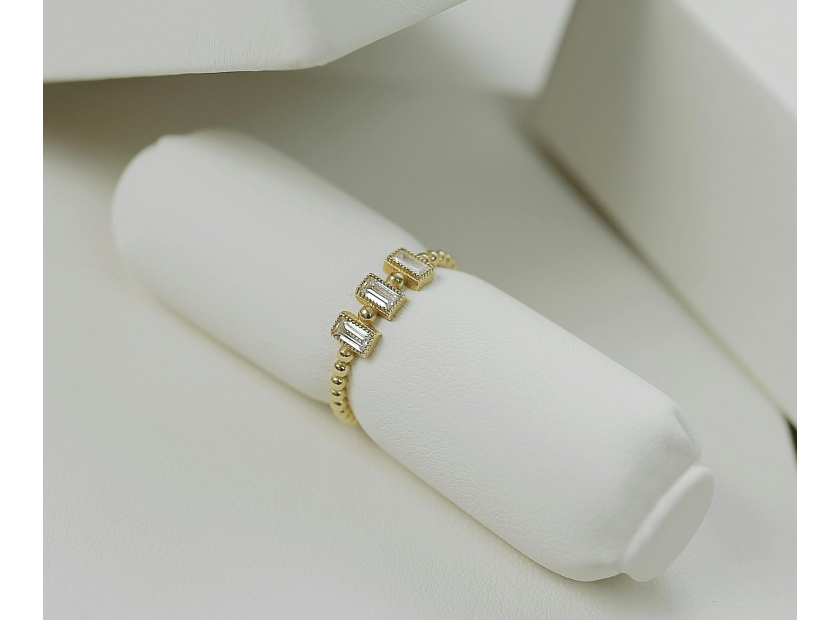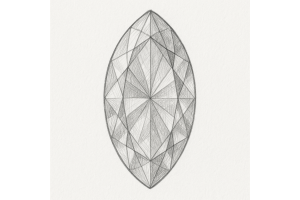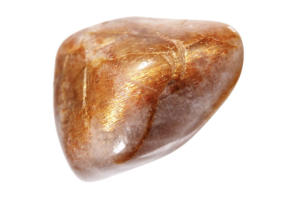GBP
/
GBP
/
Shipping to:
Currency:
How Much Should You Pay for an Engagement Ring in the UK?
Buying an engagement ring is a significant decision, not just emotionally but financially too.
The cost of engagement rings in the UK can vary dramatically, depending on various factors.
Whether you're looking for a diamond that dazzles or a ring that matches your partner’s unique style, understanding how much you should pay and what influences the cost can help you make an informed choice.
Let’s dive into the key considerations, helpful tips, and practical advice to find the perfect ring without overspending.
The Average Cost of an Engagement Ring in the UK
When it comes to engagement rings, there isn’t a “one-size-fits-all” price.
However, knowing the average amount spent can give you a useful benchmark.
In the UK, the typical amount people spend on an engagement ring is around £1,800 to £2,500.
Some spend less, while others may opt for a more luxurious ring, spending upwards of £5,000 or even £10,000.
Over the years, spending habits have evolved.
While traditional expectations once encouraged spending the equivalent of two or three months' salary, many couples today are choosing to focus on personal budgets and preferences.
So, while these averages provide a guideline, it’s important to remember that the right amount to spend is ultimately what feels comfortable for you.
Factors That Influence the Price of an Engagement Ring
Several factors can affect the cost of an engagement ring, from the quality of the diamond to the choice of metal and the ring's design.
Here’s what you need to know:
Diamond Quality (The 4 Cs: Carat, Cut, Clarity, Colour)
The quality of the diamond, or other gemstone, is usually determined by the 4 Cs:
- Carat: Refers to the weight of the diamond.
Larger diamonds are generally more expensive.
If you’re interested in exploring different diamond shapes, you can check out round lab-grown diamonds or explore other popular cuts. - Cut: Affects the stone’s sparkle.
A well-cut diamond reflects light beautifully, enhancing its appearance and value. - Clarity: Measures the number of imperfections in the diamond.
Higher clarity usually means a higher price. - Colour: Diamonds with less colour (more transparent) are often more desirable and pricier.
Fancy coloured diamonds can add a unique touch, and you can explore fancy coloured diamonds to see the options available.
Each of these characteristics can influence the price significantly.
If you’re on a budget, you might consider prioritising some qualities over others, such as choosing a diamond with a slightly lower clarity grade but a better cut to achieve that stunning sparkle.
Choice of Metal (Platinum, White Gold, Yellow Gold, Rose Gold)
The metal used for the band also impacts the cost.
Platinum is typically the most expensive due to its rarity and durability, while yellow gold and rose gold can be more affordable.
White gold often falls in between, providing a luxurious appearance without the same price tag as platinum.
Ring Design and Setting
The complexity of the ring's design can significantly influence the cost.
Custom-made or designer rings with intricate settings or additional embellishments tend to be more expensive than simpler, ready-made designs.
For a unique touch, you might consider setting the ring with a fancy coloured lab-grown diamond to create a truly personalised piece.
Brand and Retailer Mark-ups
Where you buy the ring can make a big difference.
High-end jewellery stores and luxury brands usually have higher mark-ups, while smaller independent jewellers or online retailers may offer better value.
You can explore diamond dealers in London to compare prices and find the best deal.
Additional Features (Engravings, Halo Settings, Side Stones)
Extra features like engravings, halo settings, or additional side stones can increase the overall cost of the ring.
While these touches can make a ring unique and special, they do come at a price, so it’s important to consider whether they fit within your budget.
Budgeting for an Engagement Ring: How Much Should You Really Spend?
The Traditional "Two Months' Salary" Rule: Is It Relevant Today?
The idea of spending two months' salary on an engagement ring dates back to a 20th-century marketing campaign.
While some still adhere to this rule, it’s not as commonly followed today.
The modern approach favours setting a budget that reflects your financial circumstances and personal priorities rather than sticking to outdated standards.
Setting a Realistic Budget Based on Personal Finances
Your budget should be based on what you can comfortably afford.
Consider your financial situation, other upcoming expenses (such as a wedding or home purchase), and the importance of the ring within the larger context of your relationship.
It’s perfectly fine to spend less if it means staying within your financial comfort zone.
Considering Financing Options
If you find the perfect ring but it’s a little out of your immediate budget, financing options may be available.
Many jewellers offer payment plans, allowing you to spread the cost over time.
However, be mindful of interest rates and ensure that any financing fits within your long-term financial plans.
Money-Saving Tips for Buying an Engagement Ring
Consider Lab-Grown Diamonds
Lab-grown diamonds have gained popularity for their ethical and environmental benefits.
They’re also generally more affordable than natural diamonds of the same quality, making them an excellent choice for those looking for a high-quality ring on a budget.
To get started, you can browse lab-grown diamonds and find the perfect stone for your ring.
Buy Online vs. In-Store: Weighing the Pros and Cons
Purchasing an engagement ring online can often result in significant savings due to lower overhead costs for retailers.
Online jewellers may also offer a wider range of options and the ability to customise the ring.
However, buying in-store allows you to see the ring in person and consult with a jeweller.
Shop During Sales or Look for Discounted Jewellery
Seasonal sales and clearance events can be great opportunities to find a high-quality ring at a reduced price.
Keep an eye out for Valentine’s Day, Christmas, and Black Friday sales, as these often come with discounts on jewellery.
Choose a Slightly Smaller Carat Size
A diamond just under a common carat weight (for example, 0.9 carats instead of 1 carat) can be considerably cheaper while still appearing just as dazzling.
This small difference can lead to substantial savings.
Explore different diamond shapes like oval to find a style that fits your budget while still looking impressive.
Opt for Alternative Gemstones
While diamonds remain the most popular choice, alternative gemstones like sapphires, emeralds, or rubies can make for stunning engagement rings at a fraction of the cost.
Plus, they offer a unique touch that can make the ring feel even more personal.
Custom vs. Ready-Made Rings: Which Option is More Affordable?
Benefits and Drawbacks of Custom Engagement Rings
Custom engagement rings allow you to create a one-of-a-kind piece that perfectly matches your partner’s style.
However, they can be more expensive due to the design process and craftsmanship involved.
If you have a specific vision in mind and are willing to invest a little more, a custom ring can be well worth it.
Ready-Made Engagement Rings: Cost-Effectiveness and Convenience
Ready-made rings are generally more affordable and convenient.
They come in a wide variety of styles and designs, allowing you to find a beautiful ring without breaking the bank.
If budget is a key factor, opting for a ready-made ring may be the way to go.
Should You Insure Your Engagement Ring?
Insuring an engagement ring may not be a legal requirement, but it’s a smart choice.
Engagement rings are often valuable, both monetarily and sentimentally, so having insurance can provide peace of mind in case of loss, theft, or damage.
In the UK, jewellery insurance can typically cost between 1% and 2% of the ring's value per year.
When choosing a policy, ensure it covers a wide range of risks and check if there are any restrictions, such as whether the ring needs to be worn at certain times or stored in a safe.
FAQs
What is the Minimum I Should Spend on an Engagement Ring?
There’s no minimum amount you should spend; the most important thing is that the ring fits your budget and has personal meaning.
Whether you spend £500 or £5,000, the gesture is what counts.
Is it Worth Spending More for a Branded Ring?
Branded rings can carry a premium price due to their name and perceived prestige.
While some people value this, it’s not essential for a beautiful, high-quality ring.
If budget is a concern, you can find equally stunning options from lesser-known jewellers.
Can I Get a High-Quality Ring on a Tight Budget?
Absolutely.
By prioritising certain aspects, such as choosing a smaller diamond or a less expensive metal, you can find a gorgeous ring that doesn't compromise on quality.
Lab-grown diamonds or alternative gemstones are also great budget-friendly options.
How Much Does Ring Resizing Cost if I Need It Later?
In the UK, resizing typically costs between £30 and £100, depending on the complexity of the ring and the type of metal used.
Some jewellers offer free resizing within a certain period after purchase, so it’s worth checking if this service is available.
Are Lab-Grown Diamonds Really Cheaper?
Yes, lab-grown diamonds are generally 20% to 40% cheaper than natural diamonds of similar quality.
They offer the same visual appeal and durability as natural diamonds, making them a cost-effective choice for many buyers.








